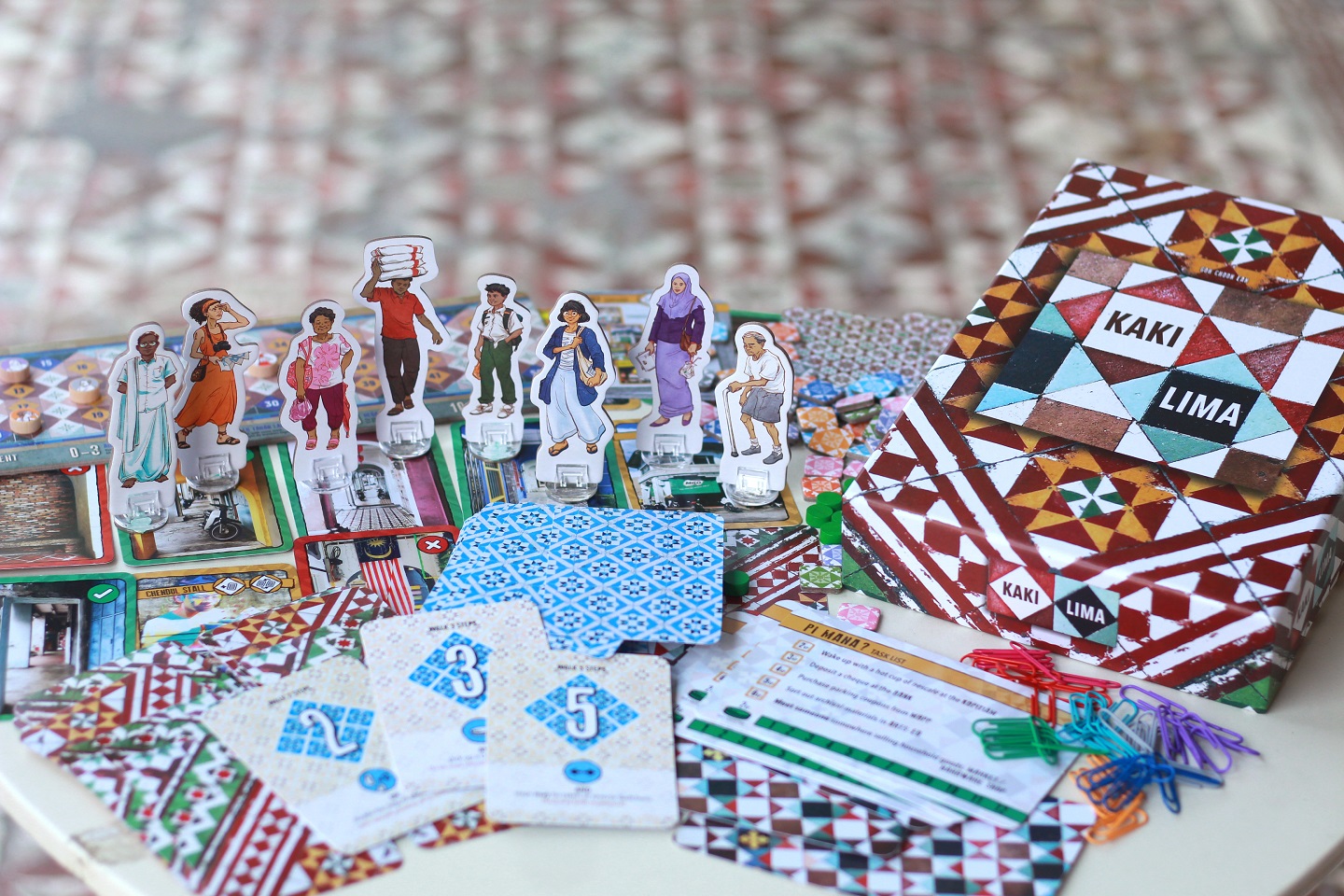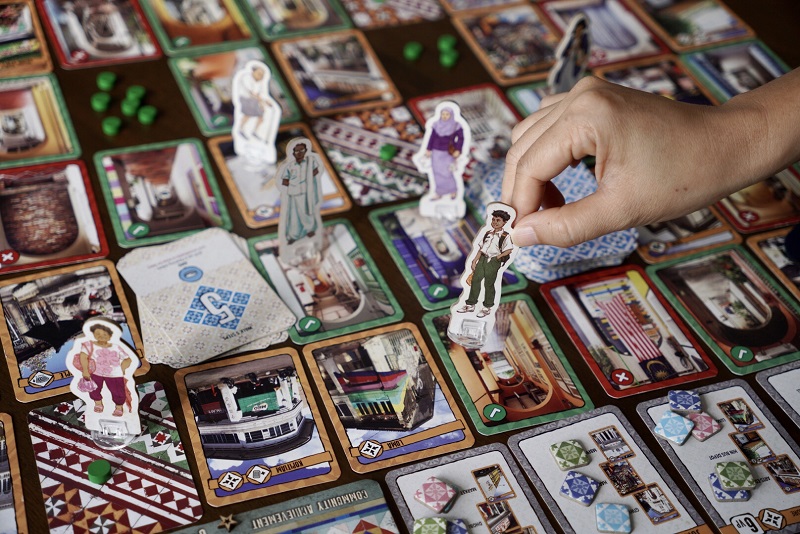
In Kaki Lima, players help cut-out pedestrians, representing a range of individuals living and working in George Town, find the best way to get around the Unesco World Heritage Site, unobstructed (All photos: Kaki Lima)
Board game Kaki Lima takes its name from the Malay term for five-foot way, an architectural feature established in 1822 by Sir Stamford Raffles under the British Town Plan. The idea was to protect pedestrians from the harsh tropical weather as they went about their daily errands and business.
In time, those covered pathways forming the front part of shophouses became a gathering point for adults and children alike to meet, catch up or play. Hawkers, too, began to set up their stalls along these stretches. Noting their communal significance, the Street, Drainage and Building Act of 1974 stipulated that shophouse doors should not swing outwards so as not to obstruct five-foot ways, recognised as a public and private space.
kaki_lima_-_game_in_play_2.jpg

But over the years, furniture and other objects have spilled out of shops onto the kaki lima. Bicycles are parked there and fences have come up to demarcate boundaries. Research shows that about 20% of George Town’s sheltered pathways are blocked, forcing people to walk on the streets.
After Goh Choon Ean decided to develop her fascination with five-foot ways into the theme for a tabletop game, she spent 20 months working on its mechanism and content, based on feedback from playtests and suggestions on how to clear those obstacles. In Kaki Lima, players help cut-out pedestrians, representing a range of individuals living and working in George Town, find the best way to get around the Unesco World Heritage Site, unobstructed. Illustrations for the scoreboard are based on encaustic cement floor tiles found on five-foot ways.
This article first appeared on May 15, 2023 in The Edge Malaysia.


